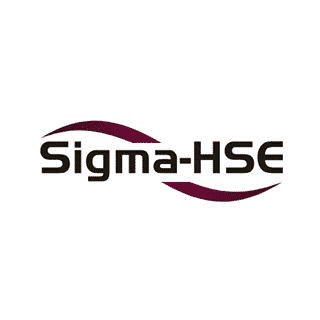Scale your business by optimising a robust chemical reaction safety strategy
We all know the value that chemical manufacturing brings to society. At a glance, we see the creation of a plethora of products, ever-expanding research and development and the immense contribution of chemical manufacturing to global economies. Over the past decade, we have seen the rise of start-ups and life science challenger businesses. From environmental protection to pharmaceuticals and drug discovery, these smaller businesses ultimately face one challenge – scaling manufacturing and chemical processes alongside increasing process safety demands. So how do manufacturing businesses scale and how can Sigma-HSE help in this complex process?
Firstly, it must be noted that, unlike other industries, scaling chemical manufacturing infrastructure is no easy task. There is no substitute for lack of understanding – software or fancy technology services. Also, if the scaling of a laboratory or small plant isn’t done properly, the results can be catastrophic for human life and the environment.
Sigma-HSE partners with businesses wishing to scale their manufacturing infrastructure by offering cost and time effective solutions. This enables businesses to establish compliance throughout the scaling process.
The Safe Operating Envelope (SOE)
For chemists and scientists, the production of their desired product at the required quality, yield and rate is an important factor, but so is safety. This control of the safe designed process is known as the safe operating envelope.
Provided keeping control of the processes within the safe operating envelope will not only ensure the successful continuation of chemical manufacturing but will also provide safety in the working environment.
Learning from the past
Even if such catastrophic events haven’t occurred on your processes, how many times have relief valves or bursting discs lifted, temperature or pressure trips activated, the crash cooling or inhibitor addition system being activated, or a batch made outside of specification? If these things are happening, then the control isn’t as effective as it should be.
Step by step, as you begin to scale your chemical manufacturing process, these issues can become ever increasingly more likely. A holistic approach to all aspects of your process and all past incidents, no matter how relevant you believed them to be at the time, is needed to limit potential accidents.
Calculating scalable input and output flows
There are huge differences in heat input and output flows between laboratory reactions and industrial-scale plants.
A larger-scale plant is more adiabatic, so the heat generated from reactions isn’t readily lost to the surroundings. So, what may seem like a benign reaction on a laboratory scale will behave differently in a scaled-up process.
Using the Basis of Safety
The Basis of Safety for chemical reactions is often provided by cooling systems or venting. But to be effective these must be designed based on the knowledge of the chemical reaction dynamics.
Watch the T2 Laboratories video on the USA’s CSB website as an illustration here.
Here, the temperature control, reactor cooling and venting were the basis of safety, but because excursions from the normal process weren’t sufficiently understood, none of these systems was designed to cope with the reality.
Ultimately, the company didn’t understand what could happen with this reaction. When scaling, the entire chemical reaction process needs to be fully understood.
Using HAZOP as a tool to scale
To understand these issues more fully, chemical reaction hazard studies should be undertaken to probe potential mal-operations that may occur in the process. This will enable the correct design of the basis of safety.
The result for businesses wishing to scale
Chemical reaction processes are complex and can be even more so when scaling. The testing required to understand chemical reaction hazards and the ability to interpret the information requires a high level of specialist equipment and competent know-how.
Sigma-HSE’s testing facilities in the UK and India can test chemical reactions and our consultants have the expertise to understand your processes and interpret chemical reaction hazard test results.
We understand that you want to scale up your manufacturing capacity as quickly as possible while ensuring total safety. This is why Sigma-HSE offers working partnerships with businesses of all sizes and industries to assure your chemical reaction processes are appropriately designed for safety.
If you’d like to discuss these issues with one of our team, please feel free to contact us at info-us@sigma-hse.com. Sigma-HSE also provides a chemical reaction hazard datasheet and brochure which will also provide further information.
Further reading
The UK’s Health and Safety Executive produce a freely downloadable piece of guidance entitled ‘Designing and Operating Safe Chemical Reaction Processes’ which would act as a suitable starting point on these issues. Sigma-HSE’s Technical & Operations Director was the author of the 1st edition of this guidance. You can read more about the appointment of Dr Fowler via this link.







